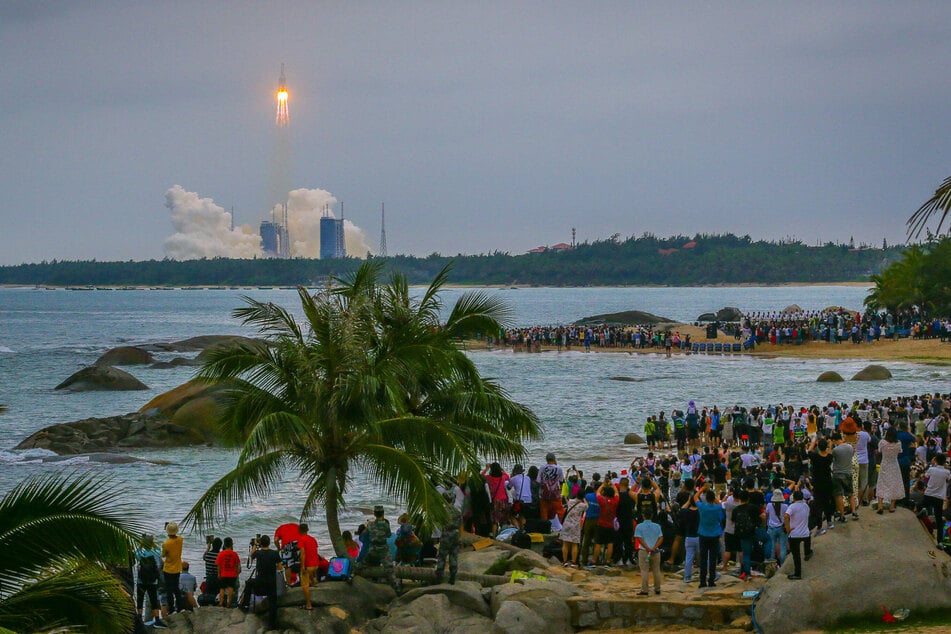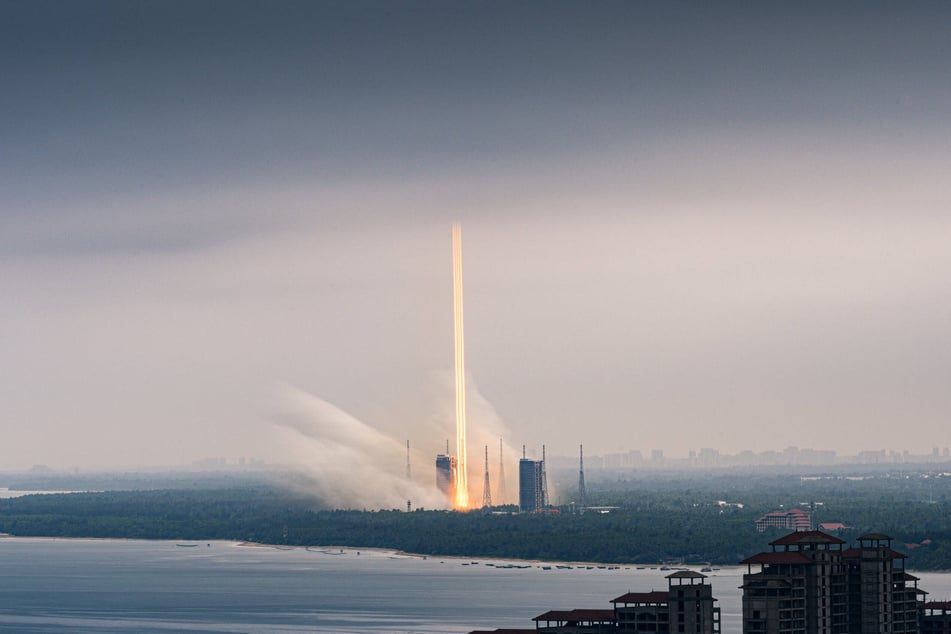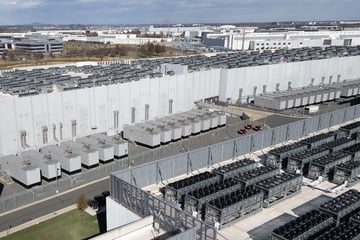Debris from Chinese rocket launch falls back to Earth as critics blast uncontrolled re-entry
Beijing, China - Debris from a rocket launched as part of China's efforts to build its own space station on Sunday re-entered Earth's atmosphere, state media reported, citing space authorities.

Debris from the Long March 5B craft re-entered Earth's atmosphere at 10:24 AM, the Global Times, a newspaper often used as an English-language state mouthpiece, cited the China Manned Space Engineering Office as saying.
According to government broadcaster CCTV, the remnants of the spacecraft re-entered the atmosphere at 10:12 AM over the Mediterranean Sea and landed at 10:24 AM in the Indian Ocean, in international waters off the Maldives.
Most of the debris burned up during re-entry, state media cited authorities as saying.
Space experts had warned of the danger from the re-entry of possible debris from an uncontrolled re-entry of the 20-ton, 30-metre-long main section of the launch vehicle, which is one of the largest pieces of space debris ever to return to Earth.
They had kept a close eye on the trajectory of the debris for the past several hours. The rocket stage had still been flying at high speed over Portugal, Sardinia and parts of Greece before crossing the Middle East and entering the atmosphere over the Arabian Peninsula around 4:15 AM, according to the US Space Command.
The head of the US space agency NASA, Bill Nelson, took aim at China.
"Spacefaring nations must minimize the risks to people and property on Earth of re-entries of space objects and maximize transparency regarding those operations," he said in a statement on Sunday.
"It is clear that China is failing to meet responsible standards regarding their space debris."
Experts believe the new rocket's design was to blame for the uncontrolled re-entry.
China plans further launches

Astrophysicist Jonathan McDowell of the Harvard and Smithsonian Center for Astrophysics in Cambridge in the United States criticized China's new rocket for not meeting today's standards. Other countries have made sure that the bulk of their missiles did not stay in orbit, but were put on a trajectory to crash specifically into the sea.
"With the Long March 5B ... China did not take either of these approaches, it designed the core stage to just stay in orbit and re-enter at some random place a week later thanks to atmospheric drag," he said. "This design approach is negligent by comparison with the current standards of other countries."
The Long March 5B craft took the Tianhe (Heavenly Harmony) core module to space last Thursday, marking the start of construction of China's space station.
In May 2020, debris from another Long March 5B rocket fell on rural parts of the Ivory Coast, causing damage to several buildings in the west African nation.
China plans two more launches with this type of rocket next year, when two modules will be put into space to be mounted on the main body of the space station. This month, a Long March 7 rocket is scheduled to launch with the unmanned cargo ship Tianzhou 2.
It is expected to be followed in June by a flight of three astronauts on Shenzhou 12 to the Tianhe core module. According to experts, neither of these two imminent flights will be followed by an uncontrolled re-entry into the Earth's atmosphere.
Cover photo: IMAGO / VCG

